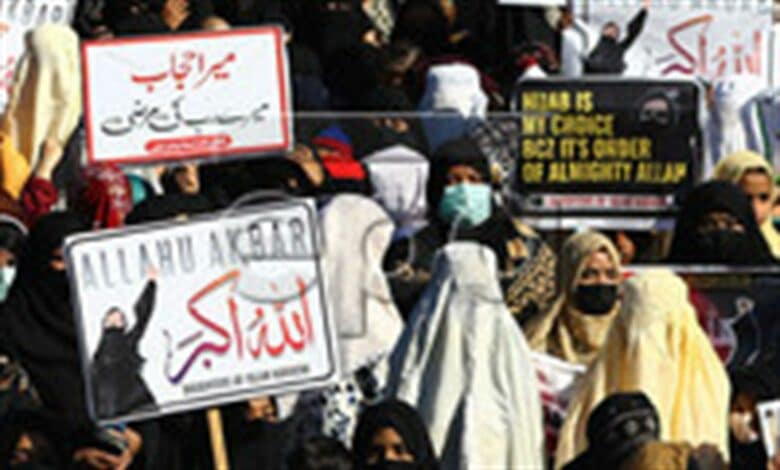Kabul, Feb 14 (EFE).- The Taliban security forces on Monday forced markets in Kabul to shut down and destroyed some shops which had been decorated to mark the Valentine’s day, which the regime considers to be against Islam and Afghan traditions.
“Today we prepared our shops inside the market for Valentine’s Day to attract customers and the day started with a rush of couples and youth, but the Taliban security forces came and closed the main gate our market,” Naseeb, a shopkeeper at the capital’s Park shopping mall, told EFE.
Several members of the all-powerful ministry of propagation of virtue and prevention of vice also visited Koche Golfroshi, the main market selling gifts, artificial flowers and Afghan clothes in Kabul, to warn the traders to not mark Valentine’s Day.
“Today morning a member of the ministry of propagation of virtue and prevention of vice visited all the shops and told us to not follow this prohibited culture which is imposed by foreign countries,” a shopkeeper at the market told EFE on the condition of anonymity.
The security forces of the Taliban government also destroyed some decorated shops in the Kart-e-Se area, and blocked access to it for Afghan citizens who wanted to buy presents or do special shopping for the day of love.
A Taliban security official was deployed to keep the main door of the Park mall, who told EFE that “In the morning a lot of rash girls come without veils for celebrating this haram and banned day,” so “we come here to not allow people inside the market.”
However, some youth argued that Valentine’s Day was an occasion to celebrate the happiness in life and express mutual love between lovers, and did not go against Islamic values or Afghan culture.
“This is only a motive to celebrate the happiness of life, and show our love to each other and make ourselves happy, which does not mean we are adding something to our religious and culture”, Pari, a young Afghan woman, told EFE outside the closed door of the Park shopping complex.
Although Valentine’s Day is not part of the Islamic calendar or Afghan culture, during the rule of the recently-ousted government it was celebrated normally in Afghanistan.
This year, the first day of love since the Taliban seized power in mid-August was celebrated in Kabul despite being disrupted in parts. EFE
lk-mvg/ia

Islamabad, Feb 14 (EFE).- Pakistani Islamist groups on Monday celebrated a conservative “Modesty Day” to counter Valentine’s Day, a festival which they oppose as a “western propaganda,” although it refuses to go away in a country whose name literally means “land of the pure.”
The largest religious political group on the country, Jamaat-e-Islami, and its unofficial student wing Islami Jamiat Talaba (students’ unions are banned in the country), held events in schools and universities across the country to dissuade the youth from celebrating the day of love.
“Islam is the religion of Haya (modesty) and we, being Muslims, reject all other ideas that contradict the idea,” Niaz Ahmed, a spokesperson of the IJT, told EFE.
He said that thousands of students participated in programs ranging from marches to seminars in different cities across Pakistan.
Ahmed said that other students’ groups had also joined events linked to the Modesty Day, created by the IJT years ago, adding that elders also needed to come together to stop “western propaganda like the Valentine’s Day.”
“Muslim students must be conscious and proactive to preserve the tenets of Islam, and alien ideas of liberality of the West must be thwarted,” he added.
The spokesperson said that Modesty Day participants paid tribute to the Indian Muslim student, Muskan Khan, who recently faced off a mob of Hindu students opposing her for wearing the hijab by shouting “Allah-o-akbar” (Allah is great), amid a controversy over wearing the Islamic veil in Indian educational institutions which has ended up in courts.
“On this Day, we pay salute to Muskan Khan, who demonstrated that modesty is the ultimate strength of Muslims,” Niaz said.
Secular activists have opposed such religious campaigns, with counter-protests such as the one organized by human rights activist Sabeen Mahmud in 2013.
However, Mahmud was assassinated two years later precisely for this initiative, according to the confession of one of the accused. EFE
aa-daa/ia
TO COUNTER THIS SEE THE WRITINGS OF A SUFI MASTER
“Here with a Loaf of Bread beneath the Bough,
A Flask of Wine, a Book of Verse - and Thou
Beside me singing in the Wilderness -
And Wilderness is Paradise enow.”
― Omar Khayyám, Rubaiyat of Omar Khayyam
















